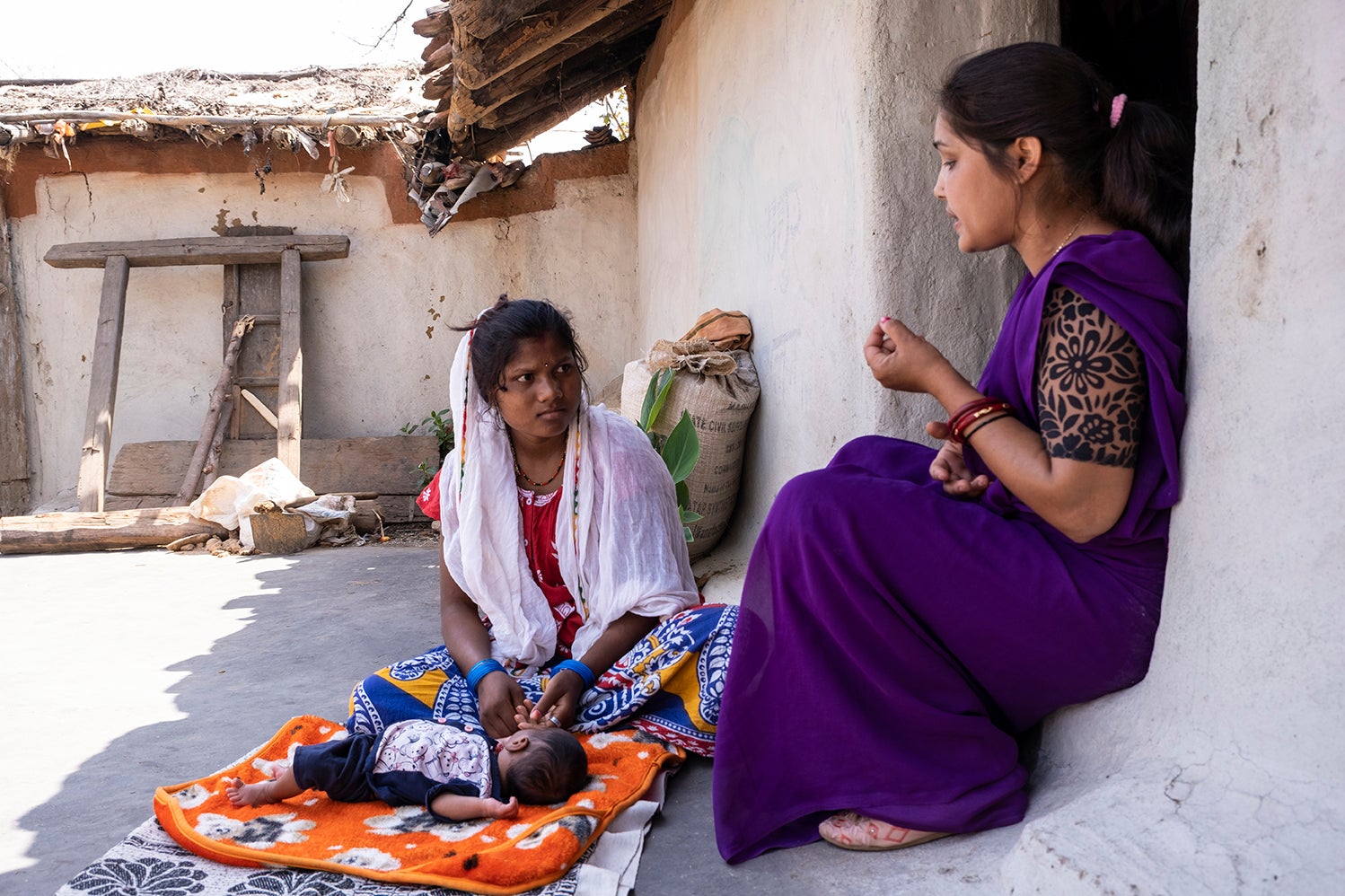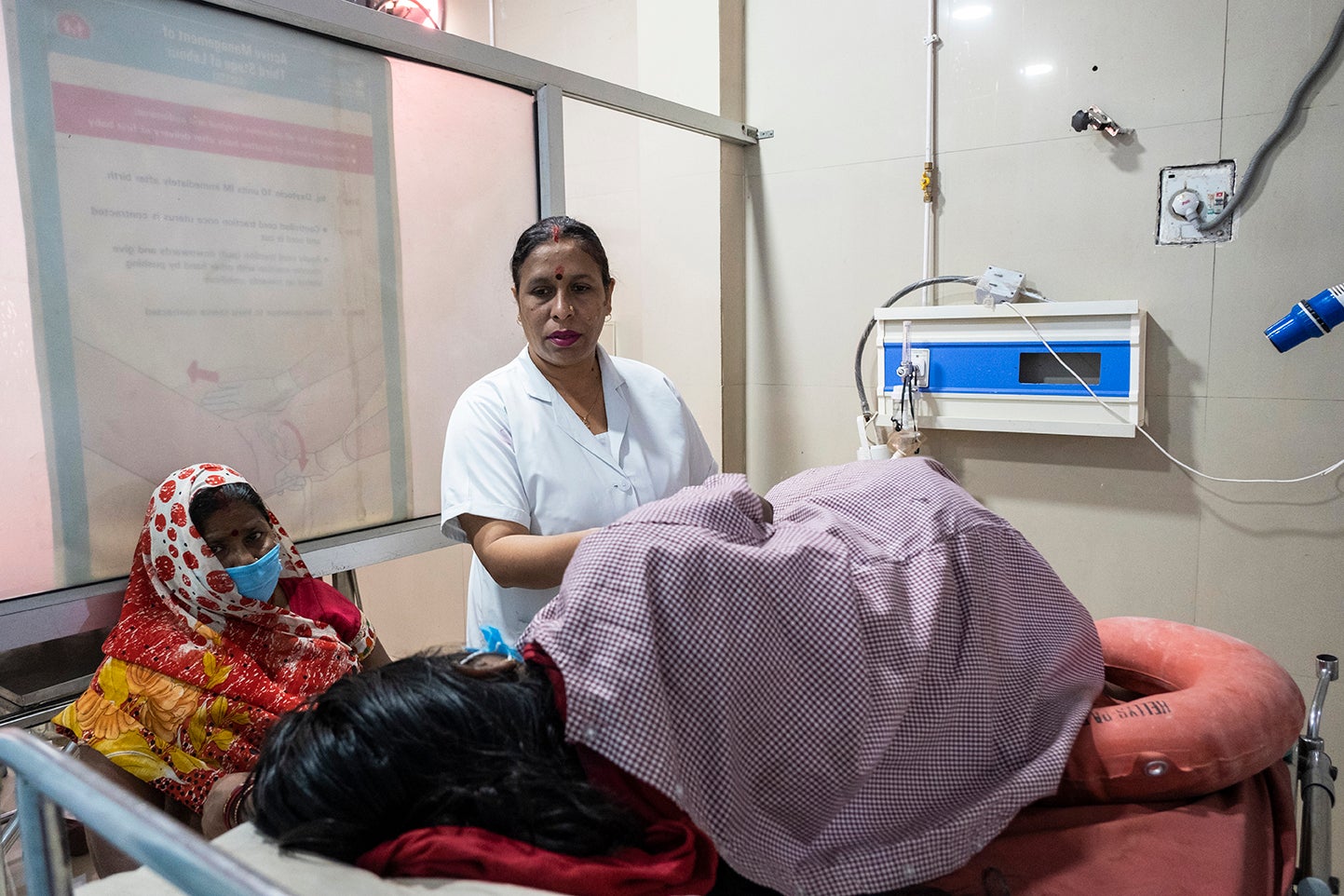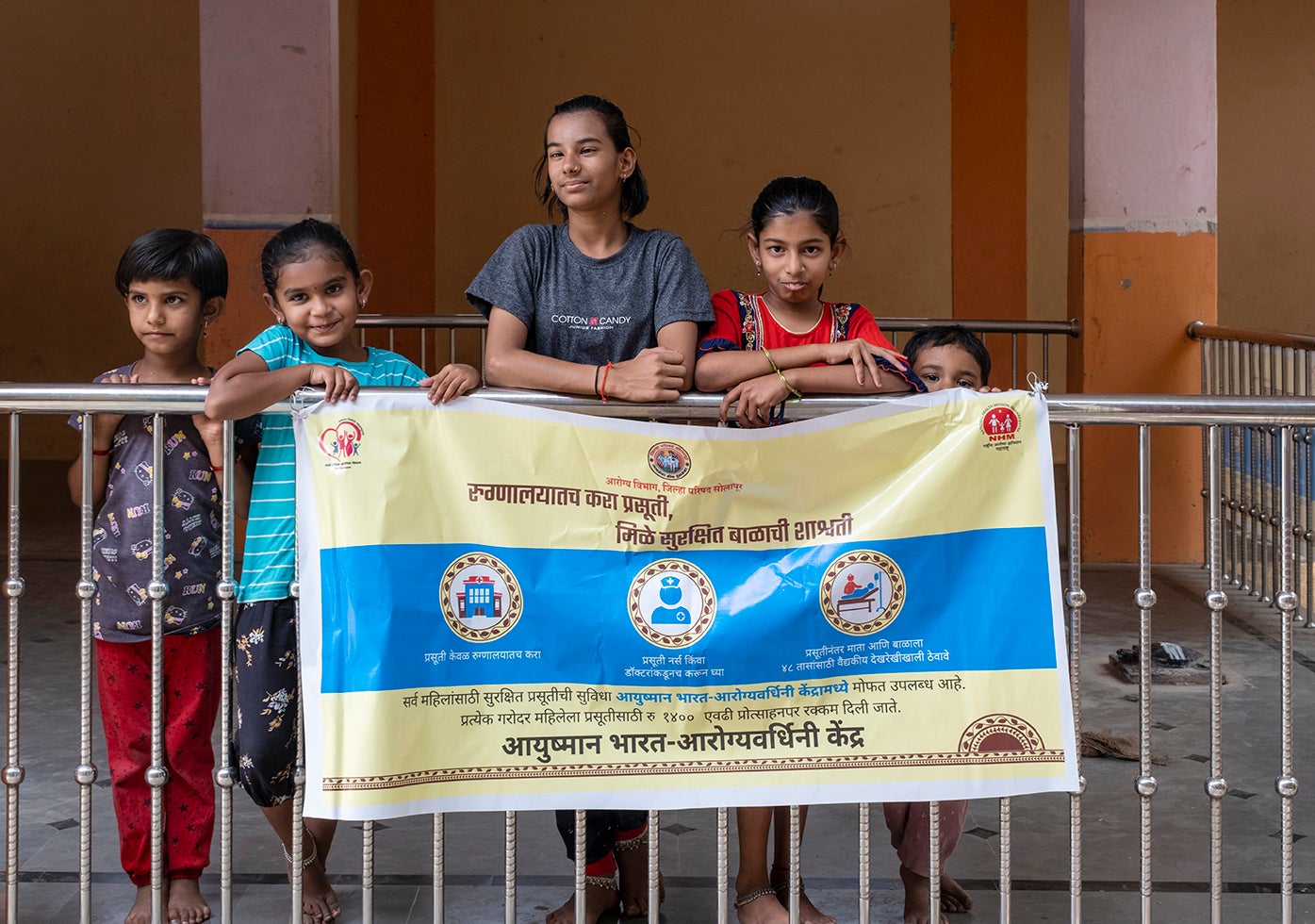Neonatal and maternal mortality reduction in India
India has achieved rapid reductions in neonatal and maternal mortality in recent decades that outpace the rate of progress expected based on economic development alone.
Acknowledgements:
Ministry of Health and Family Welfare, India MNH Exemplars Steering Committee, India MNH Exemplars Technical Working Group, Countdown to 2030, and Other Contributors
CONTENTS
Introduction to the Exemplars study in India
India is a diverse country, with a population that grew from 1.06 billion in 2000 to 1.42 billion by 2022. Considering India’s size and diversity, for this analysis, we grouped states into clusters based on their neonatal and maternal mortality levels and per capita incomes. As shown in Figure 1, these states are accordingly referred to as members of either the higher mortality state cluster or the lower mortality state cluster. While India has made remarkable progress in reducing neonatal and maternal mortality in recent decades, the strategies underlying this progress vary across state clusters. As such, Exemplar states within each of the state clusters were identified to highlight learnings from states that had made the most progress from their respective baseline mortality levels. The story of how India achieved progress is told here at the national level; more detailed descriptions of how specific Exemplar states drove mortality reductions are found in each cluster’s respective narrative. Throughout this narrative synthesis, key factors, interventions, policies, and programs that contributed to neonatal and maternal mortality declines will be featured, highlighting opportunities to learn from India’s success.
Figure 1: India’s higher and lower mortality state clusters

Key Insights
Focus on community outreach and engagement, particularly through the Accredited Social Health Activist (ASHA) program
The health system introduced major community outreach programs, particularly a network of nearly one million ASHAs based in villages and monthly village-level outreach visits by auxiliary nurse midwives (ANMs).

ASHAs visit women in communities, encouraging them to utilize health services before, during, and after pregnancy. They promote family planning, antenatal care, and birth planning, linking women and families to related government incentive schemes, often accompanying mothers to facilities during deliveries and conducting postnatal care home visits. Especially in more rural areas, one ASHA per 1000 people engages households within villages and is complemented by an ANM who supports the ASHA on a monthly basis. Before the launch of the ASHA program in 2005, India had previously focused on building capacity of providers such as traditional birth attendants to make home deliveries safer. After 2005, there was a prioritization placed on ensuring women delivered in health facilities with skilled attendants, and community outreach approaches helped to generate demand for these services. Furthermore, the innovative financing scheme underlying the ASHA program incentivizes ASHAs to promote institutional delivery.
Expansion of essential and comprehensive emergency obstetric and newborn services in the public sector
India bolstered and improved its network of facilities that were equipped to provide skilled care and particularly to manage delivery complications.
Ensuring that delivery complications could be managed outside of hospitals was a key priority for India in the previous two decades. In concert with other measures to improve the availability of health infrastructure and human resources for health, BEmONC has become widely available throughout India, and CEmONC is increasingly available in the lower mortality states. India upgraded public community health centers to operate as first referral units – meaning that they were equipped to provide 24/7 care for obstetric complications. Over more recent years, key reforms and standards were put in place to ensure that C-section and blood transfusion were available at these facilities. India also worked to establish a Special Newborn Care Unit to treat small and sick newborns at every public district hospital.

Implemented pro-poor policies to improve health service accessibility for vulnerable populations
Conditional cash transfer programs helped to generate demand for health services in India, especially among poorer, rural populations.

Complementing the launch of the ASHA program in 2005, which aimed to reach even the most disadvantaged community members, India implemented the Janani Suraksha Yojana (JSY) cash incentive scheme to promote institutional delivery. The program’s beneficiaries have been predominantly those from socio-economically disadvantaged groups, who also rely most on public sector services. A few years later, the Janani Shishu Suraksha Karyakaram (JSSK) program was established, which aimed to reduce out-of-pocket costs for childbirth and emergency newborn care – covering delivery, C-section, essential delivery care drugs, blood transfusion services, food, and transportation costs. These initiatives have been key for ensuring all communities experience progress in MNH outcomes.
Contextualizing India’s Progress in an Integrated Mortality Transition Framework
Between 2000 and 2018, India progressed from early phase II to mid-phase III of the integrated mortality transition framework
This framework helps to highlight the progress that India has made in the last two decades, in part linked to the country’s fertility decline, increases in health service coverage, and a declining burden of direct causes of maternal and newborn death. In particular, the transition framework allows for comparisons across sub-national regions to learn from their success at every phase and consider how to move towards the next. The framework can thus be leveraged to highlight aspects of maternal and newborn health that may be key to target as the country looks ahead, and continues to reducing NMR and MMR.

Exemplars in Global Health program
The Exemplars in Global Health program aims to learn from countries that have made rapid progress in improving health outcomes and disseminate this evidence to inform health policy and funding decisions. Our aim is to research success stories from low- and middle-income countries and share findings that can be useful for leaders looking to act in comparable contexts.
In selecting Exemplar countries, we reviewed evidence to identify countries that outperformed their peers in vital areas of public health, controlling for factors such as economic growth. In this way, we aim to provide more actionable, policy-relevant insight for stakeholders about how health progress can be made despite resource limitations.
Guided by research partners and technical advisors, we conduct quantitative and qualitative analyses to validate our initial assessments and assess factors that contribute to a country’s exemplary performance. Research in and across Exemplar countries could help ministries, nongovernmental organizations, and multinational bodies address key public health issues in low- and middle-income countries.
By studying proven strategies to prevent disease, malnutrition, and other conditions that burden populations of low- and middle-income countries, we aim to create a list of data-driven narratives that can serve as a resource for leaders looking to improve health within their own countries. The following narrative synthesis focuses on factors that contributed to India’s exemplary reductions in neonatal and maternal mortality.
Neonatal and maternal mortality reduction in India

Ask an Expert
Our team and partners are available to answer questions that clarify our research, insights, methodology, and conclusions.
